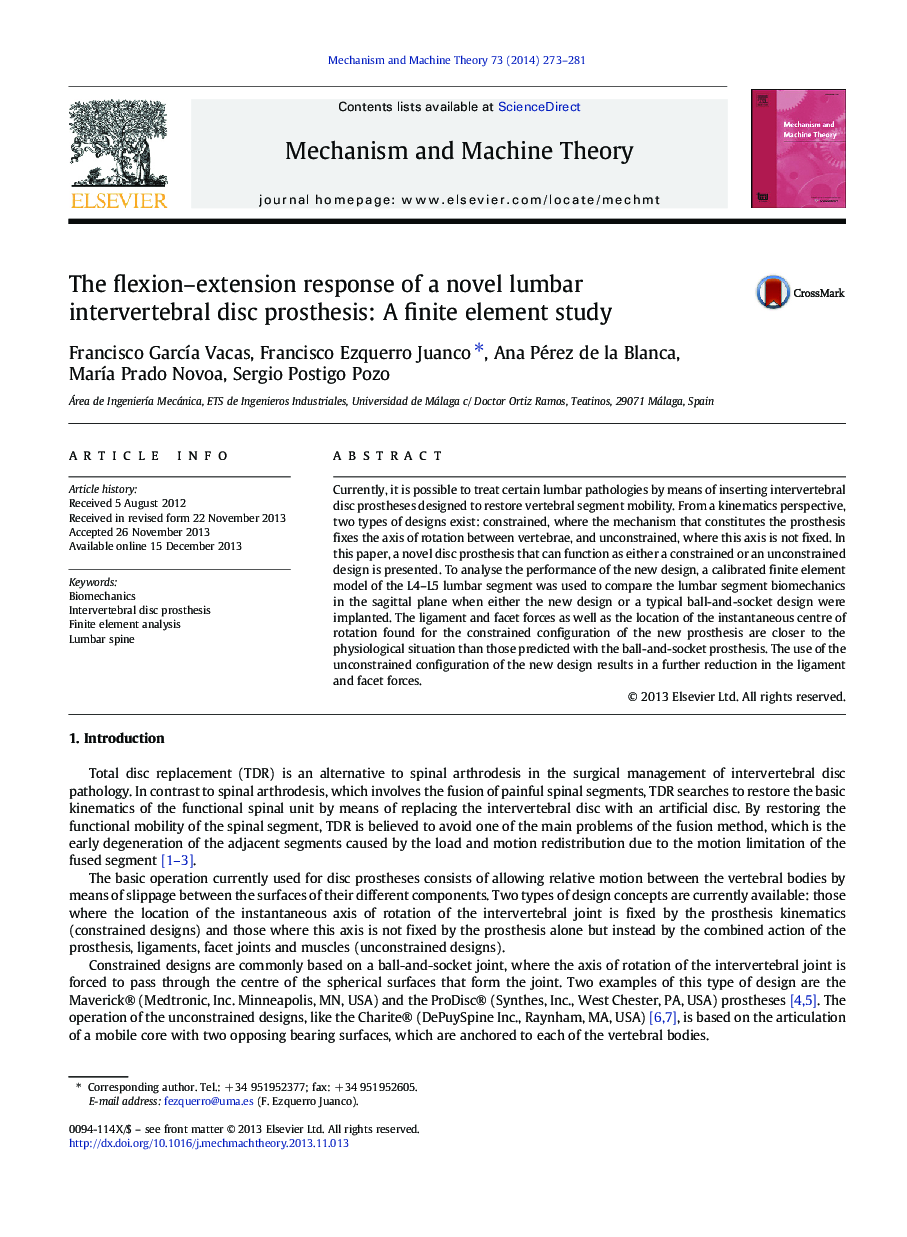| Article ID | Journal | Published Year | Pages | File Type |
|---|---|---|---|---|
| 7180275 | Mechanism and Machine Theory | 2014 | 9 Pages |
Abstract
Currently, it is possible to treat certain lumbar pathologies by means of inserting intervertebral disc prostheses designed to restore vertebral segment mobility. From a kinematics perspective, two types of designs exist: constrained, where the mechanism that constitutes the prosthesis fixes the axis of rotation between vertebrae, and unconstrained, where this axis is not fixed. In this paper, a novel disc prosthesis that can function as either a constrained or an unconstrained design is presented. To analyse the performance of the new design, a calibrated finite element model of the L4-L5 lumbar segment was used to compare the lumbar segment biomechanics in the sagittal plane when either the new design or a typical ball-and-socket design were implanted. The ligament and facet forces as well as the location of the instantaneous centre of rotation found for the constrained configuration of the new prosthesis are closer to the physiological situation than those predicted with the ball-and-socket prosthesis. The use of the unconstrained configuration of the new design results in a further reduction in the ligament and facet forces.
Related Topics
Physical Sciences and Engineering
Engineering
Industrial and Manufacturing Engineering
Authors
Francisco GarcÃa Vacas, Francisco Ezquerro Juanco, Ana Pérez de la Blanca, MarÃa Prado Novoa, Sergio Postigo Pozo,
